So I ordered an O'min 1pc a while ago from the reseller on here. Was quite happy with the cue but while like a lot of you I'm a fan of the way 1-piece cues play, I'm pretty much fed up with slogging the damn thing around - especially when traveling. It won't even lie across the back seat of my car for Pete's sake, and when you're flying forget about it. Damn thing is harder to deal with than a pair of skis.
So I decided to convert it to a 2-piece, and after years of being around cues and cuemakers and seeing all the different things they can do, I decided to go with a four-piece, flat-faced joint with a glass pin (yup, glass).
Here's a pic of the cue prior to the conversion...
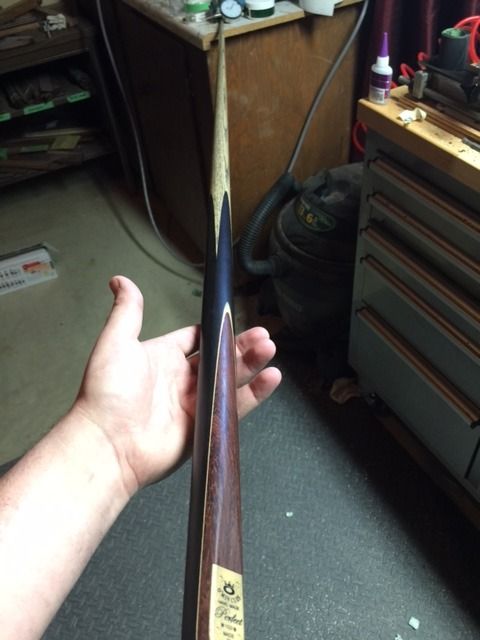
And here it is after, just an excellent job...
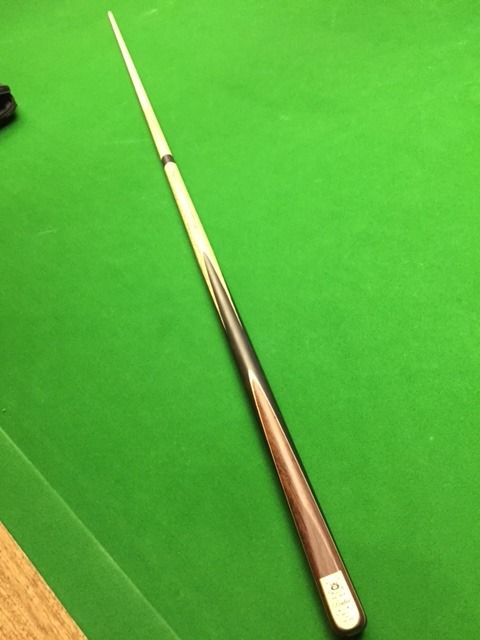
Here's a close up of the joint work. The pin as I say is made of tightly spun glass, and the collars are black phenolic. There's also a phenolic insert in the shaft end for the pin to screw into, which isn't technically necessary but is a good idea because the glass pin is slightly abrasive, so if you tapped it right into the ash it might wear down the threads over time. The guy who worked on this is a master machinist as well as a cue maker, so he was able to machine this insert to pretty exacting tolerances and believe me when it screws together it is tight! So much so you can barely even see the join when it's screwed together. He falso aligned the ash grain perfectly so it still runs seamlessly from the butt to the shaft, which is pretty cool.
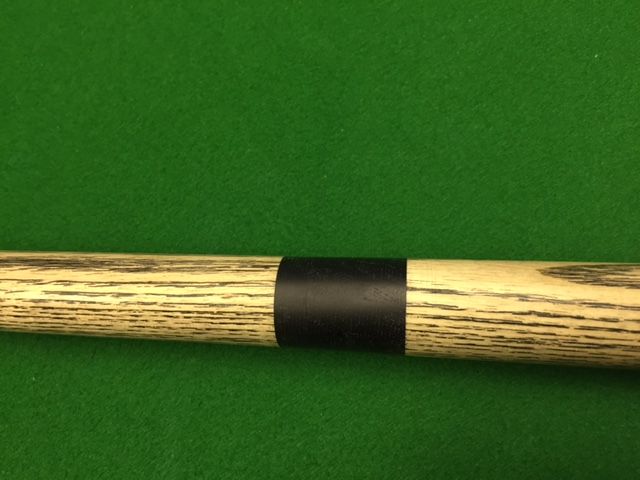
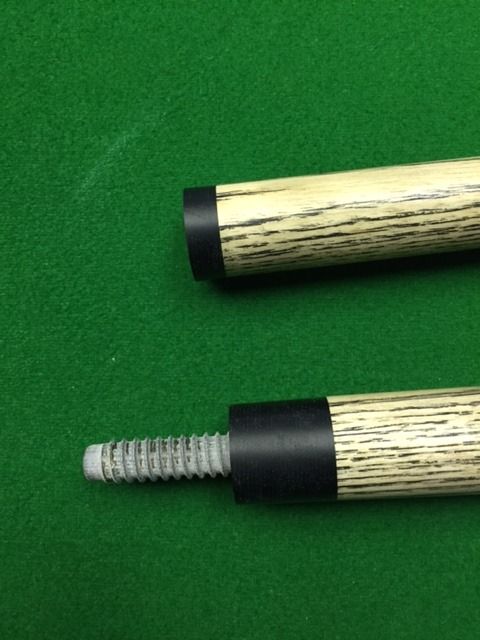
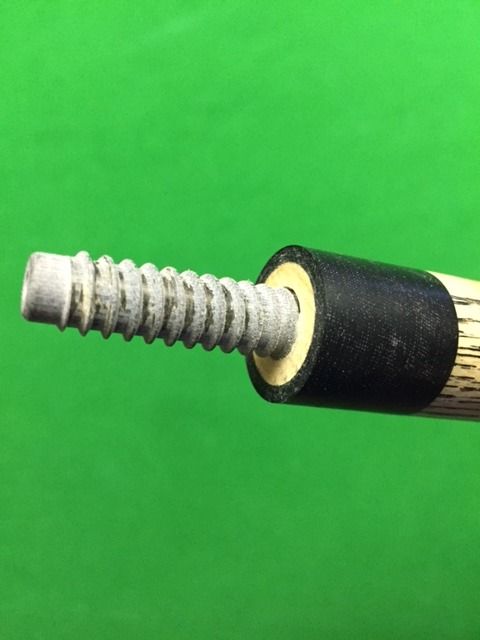
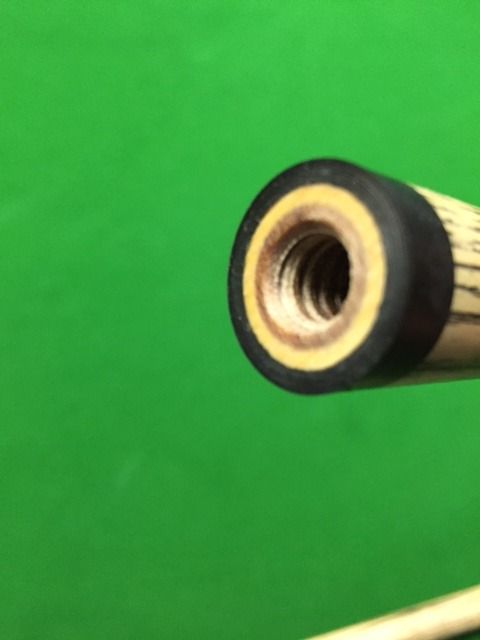
The best part about a joint like this is that, unlike a metal joint, it adds virtually no weight to the center of the cue -- and in fact I actually lost some. Prior to the conversion the cue weighed 17.2oz and now it weighs 17.15, which is hardly any difference at all. I also lost just under 1/8" in length from the cue, which is basically the width of the saw blade used to cut it. Again no big deal at all.
As for the hit I have to say the change is so negligible I can't even notice it, and I use the cue a lot. The flat-faced style joint is a big part of this, but mostly this is part of the tremendous advantage of the glass pin. Unlike metal the glass pin flexes a little so you don't have this rigid feeling in the center of the cue that you get with so many 2-piece cues. It's basically as close to a 1-piece as you can get. It's similar in a lot of ways to the old wooden jointed cues that were around back in the day, but of course the problem with those was that the wood threads broke down over time and your cue wouldn't stay tight anymore. With the glass and phenolic combo this is no longer an issue at all.
Total cost of the conversion was $225cad by the way, but well worth it for finally being able to carry my snooker cue in the same case as my pool cues, and then take them all with me when I travel. For anyone interested in doing something similar you can PM me for details and I can hook you up. It's worth every penny.
So I decided to convert it to a 2-piece, and after years of being around cues and cuemakers and seeing all the different things they can do, I decided to go with a four-piece, flat-faced joint with a glass pin (yup, glass).
Here's a pic of the cue prior to the conversion...

And here it is after, just an excellent job...

Here's a close up of the joint work. The pin as I say is made of tightly spun glass, and the collars are black phenolic. There's also a phenolic insert in the shaft end for the pin to screw into, which isn't technically necessary but is a good idea because the glass pin is slightly abrasive, so if you tapped it right into the ash it might wear down the threads over time. The guy who worked on this is a master machinist as well as a cue maker, so he was able to machine this insert to pretty exacting tolerances and believe me when it screws together it is tight! So much so you can barely even see the join when it's screwed together. He falso aligned the ash grain perfectly so it still runs seamlessly from the butt to the shaft, which is pretty cool.




The best part about a joint like this is that, unlike a metal joint, it adds virtually no weight to the center of the cue -- and in fact I actually lost some. Prior to the conversion the cue weighed 17.2oz and now it weighs 17.15, which is hardly any difference at all. I also lost just under 1/8" in length from the cue, which is basically the width of the saw blade used to cut it. Again no big deal at all.
As for the hit I have to say the change is so negligible I can't even notice it, and I use the cue a lot. The flat-faced style joint is a big part of this, but mostly this is part of the tremendous advantage of the glass pin. Unlike metal the glass pin flexes a little so you don't have this rigid feeling in the center of the cue that you get with so many 2-piece cues. It's basically as close to a 1-piece as you can get. It's similar in a lot of ways to the old wooden jointed cues that were around back in the day, but of course the problem with those was that the wood threads broke down over time and your cue wouldn't stay tight anymore. With the glass and phenolic combo this is no longer an issue at all.
Total cost of the conversion was $225cad by the way, but well worth it for finally being able to carry my snooker cue in the same case as my pool cues, and then take them all with me when I travel. For anyone interested in doing something similar you can PM me for details and I can hook you up. It's worth every penny.







Comment